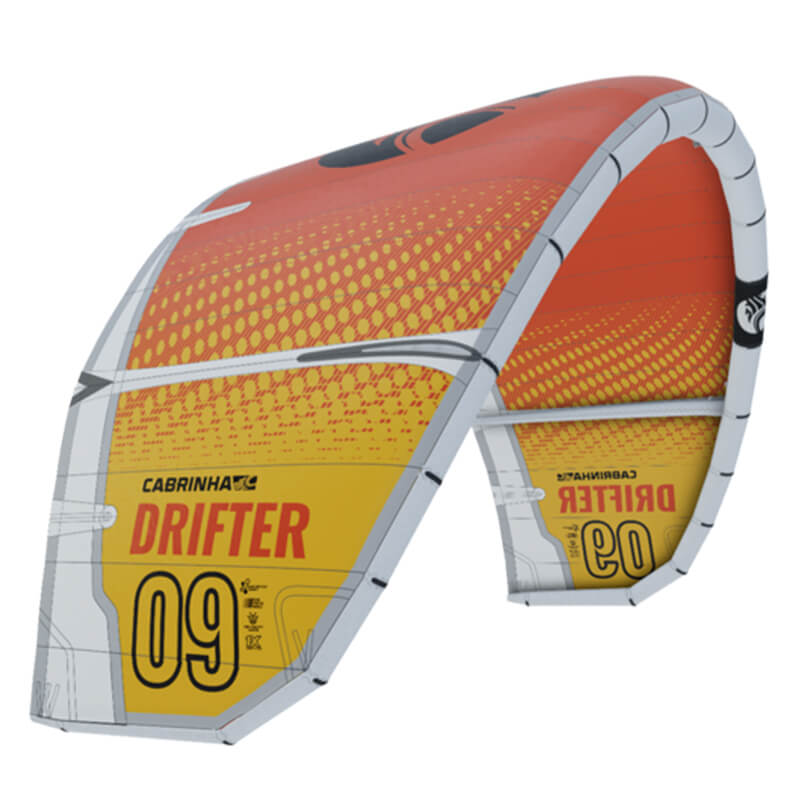When you purchase gear through links on our site, we may earn a small commission. Here’s why you can trust our tests and our affiliate partner.

It’s hard not to notice the Drifter with the idyllic scenes pushed at us through social media of Moona Whyte and Keahi de Aboitiz running around perfectly groomed Hawaiian right-handers. Cabrinha’s surf-focused design is a long proven platform, and has consistently lived up to its namesake.
We’re presented with a shape that’s unarguably a quintessential modern wave kite. Relatively open canopy presents a lot of useful surface area to the wind, and the wide and squared off tips remain engaged and provide excellent leverage for a responsive turn, even when on very slack lines.
The leading edge diameter is on the more narrow and efficient side. All the usual Cabrinha trappings are there with their specially coated Nano ripstop, more than adequate scuff protection, and sensibly placed darting in the trailing edge, meaning there’s zero flutter. That creamy Cabrinha trademark bar feeling, which is on the lighter side in the case of the Drifter, proliferates.
This year sees some adjustment available on the leading edge hang points to enable the Drifter to be switched between onshore and offshore modes. This is a simple process of moving a few knots, but having had a good play with this feature, it makes a significant difference to the handling characteristics. Onshore mode makes the kite more dynamic and pivotal in the turns and luff downwind in a trustworthy fashion. Offshore mode makes the kite fly a little further forward, and clamber upwind more efficiently, which is ideal for the typically more inconsistent wind conditions often associated with offshore riding. The forward flying also means there’s a little more power dump available allowing you to edge nicely into the pocket without too much downwind pull.
In the air the kite has a gentle set of characteristics, and in both flying modes feels very gentle around the corners with a soft, progressive power surge that is easy to feather with minimal bar inputs. There’s enough feedback there to fly the kite without having to watch it, but there’s zero fatigue generated through the bar system. The power delivery is so smooth it almost puts you into a trance.
It truly is Drifter by name, drifty by nature. There are few wave kites on the market with the ability to run towards whilst flying stationary and remain so well behaved, particularly if you park it in the top corner of the wind window. If you do push it beyond the realms of physics, it has a reassuring background pull and gives you a decent warning before becoming unstable, letting you rectify the situation before it becomes anything close to an issue.
The Drifter is a trustworthy partner that thrives in decent set piece wave conditions, and the flexibility offered by its front tuning points now extend its range of use further into the onshore conditions many of us deal with regularly, making it quite the Swiss army knife.